Off late we have received a lot of queries on investing in Gold.
“Is this a good time to invest in Gold?
Is it better to invest in physical gold, Sovereign Gold Bonds or Digital Gold?”
The interest appears to be justified as Gold has rallied more than 36% last year. As investors, we like to believe that our decisions to buy, sell, or hold are deeply rooted in logic and discipline. Sadly, that’s not always the case.
What is going on?
What is at work here is a phenomenon known as recency bias. This is our inclination to think that something is more likely to occur again because it happened in the recent past. As humans, it is easier for us to remember what happened recently. This short-term preference helps us in many aspects of our lives, but investment decision making is not one of them. Due to recency bias, we place excessive importance on recent events. When we see our portfolio drop 10%, recency bias makes us believe that it will keep on dropping.
When making investment choices, it may appear that we have to forecast the future. Which is impossible unless you have decoded time travel😉. When faced with tough choices, especially in uncertain and volatile times, our minds take shortcuts. So for example, when we are trying to forecast the future, our minds instinctively grasp for what occurred most recently: the effect of recency bias.
Safety in numbers?
For centuries, investors have very often faced strong temptations to join the investment craze based on feelings, rather than a sensible financial strategy. The infographic below shows four major financial booms and bursts. During the build up to these bubbles, investors bid up the prices of tulip bulbs, stocks and real estate to unsustainable levels. So even quicker than they expanded, these markets burst and contracted leaving the herd scrambling.
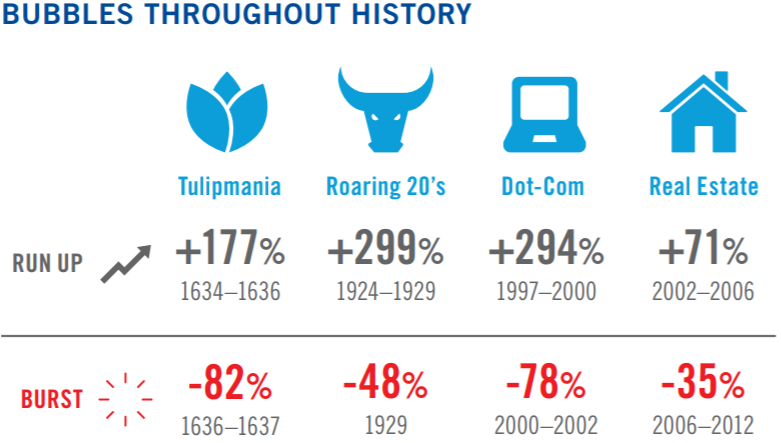
The trouble of “going with the flow”
In the charts below, the green line represents the performance of the S&P 500 Index and the blue shading represents equity fund flows. When the S&P 500 Index performed well during the internet boom, there was an inflow of funds into equity (buying high). On the other hand, when the market shrunk after the housing crash, investors removed their wealth from equity funds (selling low).
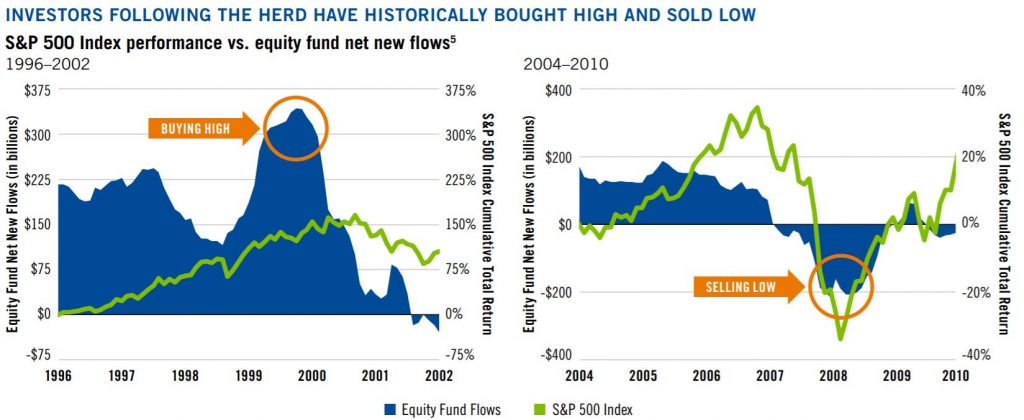
Herding translates to lazy thinking.
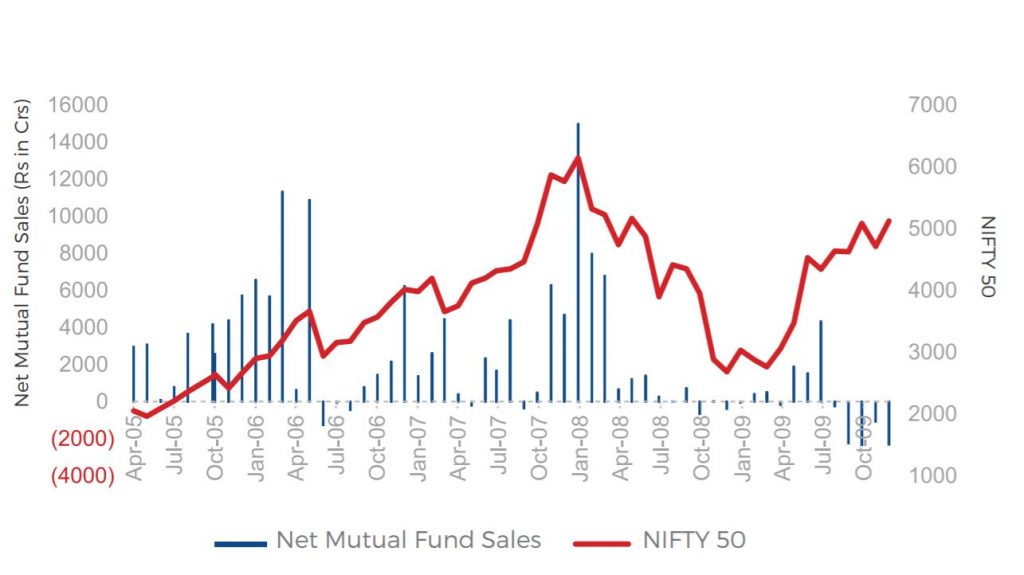
We saw a similar trend play out in India in the late 2000’s. The index level and equity investments moved in synchronization resulting in a large part of investors’ wealth being invested close to the peak of the cycle. This resulted in marginal returns and a majority of investors were disenchanted to see negative returns at the end of the cycle.
How we can minimize the effects of Recency Bias
- Half the battle is won in realizing that it exists and that any investor can fall prey to it.
- To avoid recency bias, maintain a long-term perspective. Examine data and trends dating years or even decades and not just a matter of months.
- Recruit a second set of eyes. As we are limited by our personal viewpoints, it is always a prudent idea to seek out an objective family member, friend or financial advisor to offer to different one. Someone who is not as involved and caught up can better assess our situation and spot areas where we have unconsciously fallen for this bias.
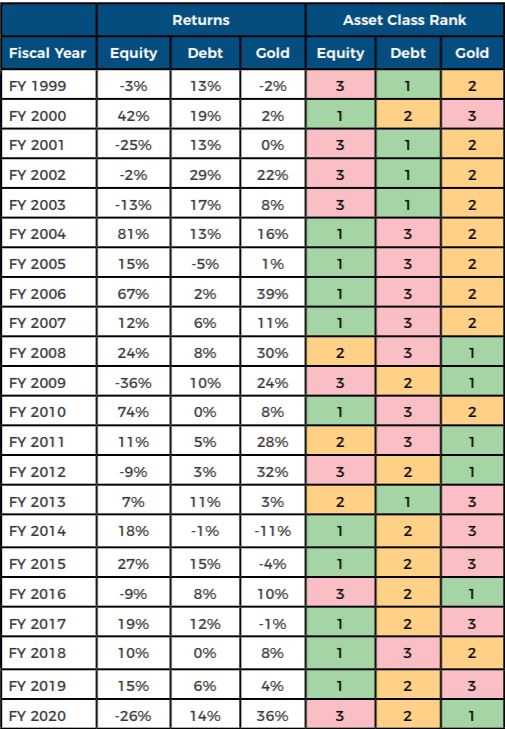
Proxies used for asset classes: Equity – Nifty 50, Debt – Nifty 10 year benchmark G Sec, Gold – Spot Rate 10/Grams
Asset classes move in cycles. No one asset class continually underperforms or outperforms. Historical returns tend to bias investors towards whichever asset class which has performed well off late. However, this might result in investors chasing momentum and buying an asset class at a high price near its peak. Over the past two decades; equity, debt and gold have outperformed each other at different times. The Golden Rule of Asset allocation and Diversification across asset classes can help investors avoid such biases.
By making your decisions using a longer timeline, you’ll avoid the trap of assuming tomorrow will be like today. Remember the basic law of “financial physics” is Reversion: What goes up must come down, and what goes up a lot usually comes down likewise.
What really matters
Before making any major decisions, surrounding yourself with the right information and resources is critical. Even though this can be hard to do during volatility. When the market is dropping, our minds find it difficult to look past what is happening immediately.
Set an information schedule
Being bombarded by constant market updates can sway even the most skilled investor. Once you ensure your portfolio is aligned with your goals, try checking it only quarterly. Asset classes can go from being priced at a “fair” value to being undervalued or overvalued; like a pendulum swinging from one end to the other. It is essential for investors to practice discipline to achieve their financial goals.
What goes up can go down (and vice versa)
Especially in bull markets, forgetting the past can be injurious to our wealth. When the market has risen, we often assume it will continue to do so. Due to recency bias, we may forget that markets can also fall. We might be over enthusiastic, taking on more risk – possibly just as the markets move into overvalued territory.
It is integral not to be swayed by recent events and to follow through with your investment decisions based on long term performance data.
Markets will go through their cycles. In our investment journey, we sometimes overlook the basis; getting swept in the moment (whether due to a windfall gain, an investment tip off or sharp movements in the markets) ending up making a poor choice. Successful investing involves knowing these pitfalls and trying to overcome them.

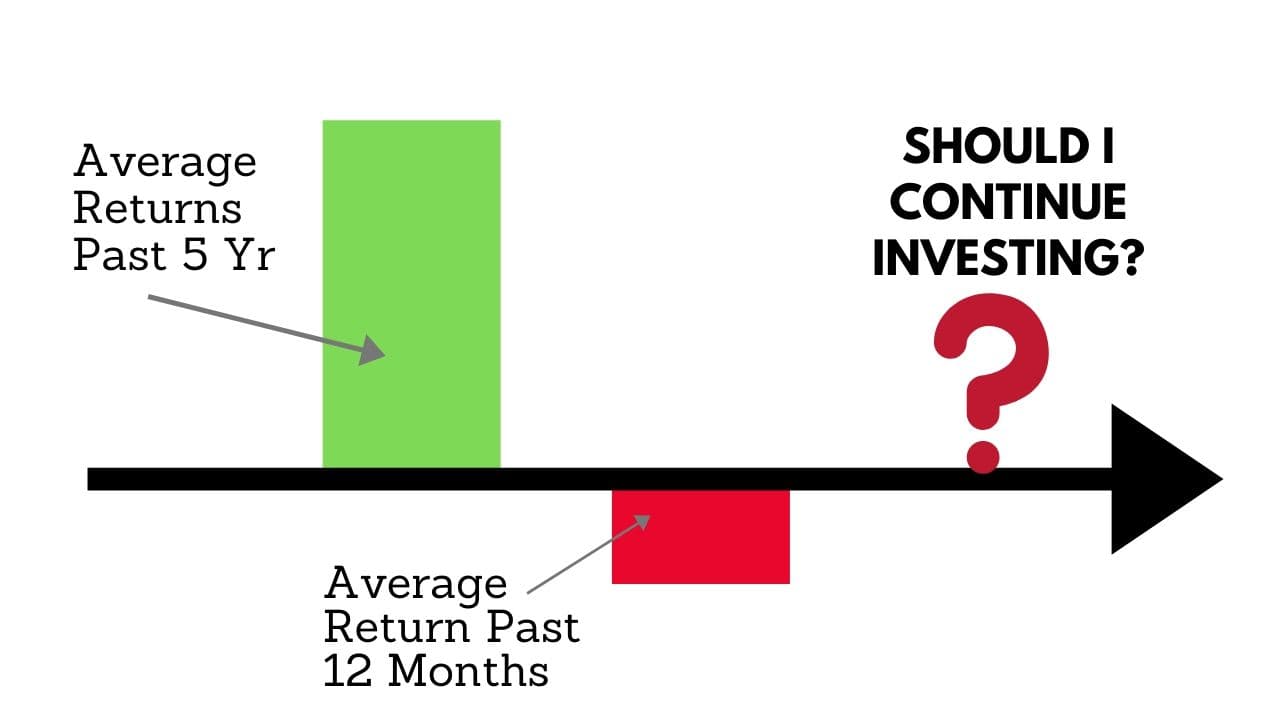


Pingback: Quit Letting Recency Bias Dictate Your Investment Strategy - Dupree Financial